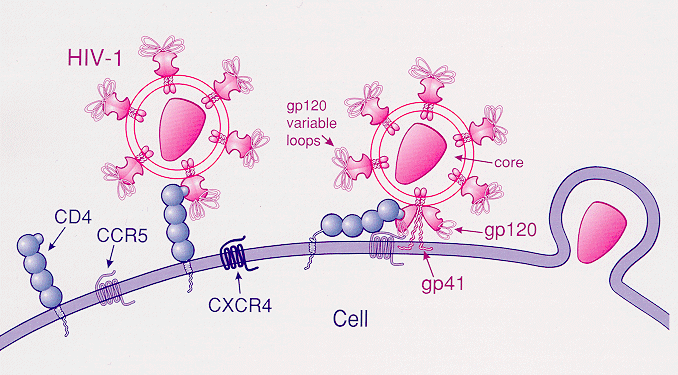An ongoing dialogue on HIV/AIDS, infectious diseases,
August 30th, 2010
Required Reading: In Love and “Serodiscordant”
 Being of a certain age, my wife and I still subscribe to the print version of the Sunday New York Times. Since we also get the local rag, quite a bit of paper is deposited on our doorstep each week.
Being of a certain age, my wife and I still subscribe to the print version of the Sunday New York Times. Since we also get the local rag, quite a bit of paper is deposited on our doorstep each week.
Worth it? You bet, especially since occasionally there’s a gem in there like this week’s Modern Love column. (I supposed we might have stumbled upon it if we’d just read it on line, but I doubt it.) In a piece entitled “On the Precipice, Wings Spread”, Kerri Sandberg writes about dating (and ultimately marrying) her HIV-positive boyfriend:
Even though Theo appeared to fit into the lucky new “long-term non-progressor” category, his H.I.V. status taught us to savor each day because you never know how many you’ll have. We did our best to maintain that balance sexually, too, creating a repertory that was spontaneous without being reckless, careful but not fearful. According to a guy on the Centers for Disease Control hot line, our brand of lesbian-inspired lovemaking posed a “slight risk” of transmission. But I also had a slight risk of dying from just about anything. What was I supposed to do, never leave the house?
HIV clinicians will recognize immediately this bit of denial, one that’s surprisingly common among our “serodiscordant” patients. And even though annual testing is recommended for uninfected sexual partners of people with HIV, those that actually get tested seem to be the exception, not the rule.
But when you think about it further, and when the feelings are described as artfully as Ms. Sandberg did here, maybe that’s not so surprising after all.
August 26th, 2010
Lyme Cases Up — Anecdotes, True Epidemiology, and More Anecdotes
 All of us New England-based ID doctors (and internists and family practitioners and pediatricians and NPs/PAs in primary care) who have been in practice a while will tell you that Lyme cases have been increasing for years.
All of us New England-based ID doctors (and internists and family practitioners and pediatricians and NPs/PAs in primary care) who have been in practice a while will tell you that Lyme cases have been increasing for years.
And it’s not just the number of cases, it’s also where and when they are occurring. A few years ago I saw acute Lyme in a man who had hiked near his country house in the Berkshire mountains — in early December. (Yes, it was a warm spell.)
One other memorable case was a woman whose only outdoor exposure was a brief walk through the Fenway Victory Gardens, which are located not 100 yards from Fenway Park — an area hardly known as a hotbed of tick-borne infections.
The funny thing is that the local Brookline Society of Amateur Epidemiologists* has noted that this year Lyme cases seem to be down somewhat, at least compared to the last few seasons. (*My wife and me.) Hence this front page article in the Boston Globe initially took us by surprise.
But the explanation for this apparent contraindication is in the rest of the article, which comments not on this year’s case numbers, but on the trend over the past 10 years — which is exactly what all of us have noted as well.
Lyme disease, the tick-borne ailment once primarily a scourge of the Cape and Islands, is now rampant in swaths of Massachusetts where locally acquired cases were rare a decade ago.
And what about our sense that cases are actually down this year compared to last?
Could be just anecdote — that’s what real epidemiologists are for, to see if this impression is real.
August 18th, 2010
Wednesday Wolbachias
 Some scattered HIV/ID issues as the days remain warm but are (sadly) growing shorter:
Some scattered HIV/ID issues as the days remain warm but are (sadly) growing shorter:
- Here’s another one of these legal cases in which a person with HIV is charged with a crime for not warning partners about being HIV positive. Interesting twists this time: it’s a woman, and it’s in Germany. This other one in Texas is more typical. Read Abbie Zuger’s take on all this here from a case in Florida, and my (slightly different) view here.
- Are rates of MRSA really down? Amazingly, astoundingly, shockingly — yes, at least in health care settings. Leading theories for this decline are better prevention efforts for blood stream infections in general and MRSA in particular.
- From what I’ve read about the new “superbug” (blaNDM-1), it seems to be “just” another carbapenemase-producing gram negative … right? Just a hunch, but if it weren’t for this choice part — “Several of the UK source patients had undergone elective, including cosmetic, surgery while visiting India or Pakistan” — this might not have made such a splash in the news.
- One person in New England is sick with Eastern Equine Encephalitis (EEE), likely contracted before the mosquito spraying began up here. Which reminds me –could there be any advice less heeded than when health departments tell people to wear “long-sleeves, long pants and socks when outdoors” in the summer? Perhaps the one to “avoid outdoor activity at dusk” is a close second.
- Just when you thought the JetBlue flight attendant story could not get more bizarre — well yes it could.
- Not an ID-related factoid, but this information about head trauma mimicking ALS is incredibly interesting. Confession: Gehrig’s “Luckiest Man” speech chokes me up every time.
Oh, and about the title of today’s entry — read about Wolbachias here (a whole book!) and hat tip to Rob Neyer for the style.
Now I just need a microorganism for every day of the week…
August 10th, 2010
Curbside Consults: The Yin and the Yang
 One of the simultaneously most enjoyable and exasperating aspects of being an Infectious Disease specialist is the large volume of “curbside” consultations we get from colleagues.
One of the simultaneously most enjoyable and exasperating aspects of being an Infectious Disease specialist is the large volume of “curbside” consultations we get from colleagues.
For example, here’s this week’s talley — and it’s only Tuesday — done from memory and without systematically keeping track of emails, pages, phone calls, etc.:
- Duration of antibiotics after urosepsis, organism resistant to TMP/SMX and quinolones
- Need for repeat immunizations in splenectomized adults (got that one last week too, coincidentally)
- Work-up for diarrhea and mild eosinophilia in someone just returning from Nigeria
- Best outpatient antibiotic for prevention of MRSA recurrence
- Interpretation of Lyme immunoblot
- When to suspect false-positive HIV viral load test
- Can someone catch hepatitis C from sharing a toothbrush? (Very, very unlikely — but why do it, ugh.)
The pluses of doing curbsides are numerous, and extend beyond just helping our colleagues and their patients. It’s also a way of fostering a friendlier clinical environment, one which generates interesting referrals and open communication among different specialties.
After all, lacking a billable procedure (the lucrative gram stain has been outlawed by OSHA years ago), we are hardly going to rake in the dough under the current fee-for-service health care structure regardless. So why not do it?
One potential answer is in this paper just published in Clinical Infectious Diseases, from the ID group at the University of Vermont. They kept track of all curbside consults done in 1 year period, and “converted” them into the work component of the relative value unit, or RVUs.
Not surprisingly, lots of their work is done via curbside:
A total of 1001 curbside consultations were fielded: 66% involved outpatients, and 97% were coded
as initial consultations. A total of 78% of curbside consultations were considered complex in nature, being assigned a CPT code of level 4–5, including 84% of the inpatient and 75% of the outpatient curbside consultations… Curbside consultations represented 17% (2480/14,601) of the clinical work value of the infectious diseases unit. If the infectious diseases unit had performed these curbside consultations as formal consultations, an additional $93,979 in revenue would have been generated.
In other words, time is money — only in this case, time isn’t money at all. The paper concludes by stating:
Hospital administrators, managed care groups, insurance companies, and academic societies need to recognize that curbside consultations represent a large volume of work, are complex in nature, and represent potentially large sources of lost revenue for infectious diseases specialists. The curbside consultation should be incorporated into measures of provider workloads, productivity, contribution to health care delivery, and financial compensation.
Amen to that.
August 3rd, 2010
HIV Testing: NY Makes Progress; Massachusetts … Not So Much
 From the office of New York Governor David Paterson:
From the office of New York Governor David Paterson:
The Governor signed into law S.8227/A.11487, which will allow patients to agree to HIV testing as part of a general signed consent to medical care that remains in effect until it is revoked or expires.
The bill will also, among other things: allow oral consent to an HIV test for a “rapid HIV test,” … permit anonymous testing of the blood of a person who is deceased, comatose or otherwise lacks the ability to consent, if someone such as a health care worker is exposed to the person’s blood and no one with the authority to consent to testing can be found in time for the exposed worker to begin medical treatment for HIV.
New York is particularly important for HIV policy in the United States, as it is home to the largest number of people living with AIDS of any state — only California is close.
I particularly like the provision that HIV testing can be done for occupational exposures when the source of the exposure is unable to provide consent. These exposures are a worker safety issue, and the rights of the provider are arguably just as important as the rights of the patient.
As for my home state?
Well the latest HIV testing bill, opined on here, and which looked so promising, just died in the Massachusetts Legislature. Interesting additional coverage of the controversy here on The Huffington Post.
Some debate about casinos got in the way, I guess.
July 30th, 2010
Perinatal Transmission of HIV “Solved” — Now How Do We Pay For It?
 Conspicuously absent from this year’s International AIDS Conference were major studies on prevention of maternal-to-child transmission.
Conspicuously absent from this year’s International AIDS Conference were major studies on prevention of maternal-to-child transmission.
It could be that I just missed them, so I emailed a colleague who specializes in the area, and she concurred:
Nope, did not see or hear major PMTCT updates at IAS.
The thing is, this problem has been all but solved, at least scientifically. Put the mom on fully suppressive treatment, and the rest of what is done barely matters — mode of delivery, HIV treatment to the baby, breast vs formula feeding. It’s all a wash, because HIV transmission will barely ever occur.
(Yes, there are numerous other questions unrelated to HIV transmission, most notably the safest regimens from the perspective of in-utero exposure. Bold prediction: one day we will no longer be using zidovudine.)
So — now that we know what to do (treat the moms), we just have to learn how to pay for it. Easier said than done.
July 19th, 2010
Vienna IAS: First (Really) Positive Microbicide Study
Big news from Vienna and Science, imminently:
The CAPRISA 004 trial assessed effectiveness and safety of a 1% vaginal gel formulation of tenofovir, a nucleotide reverse transcriptase inhibitor, for the prevention of HIV acquisition in women. A double-blind, randomized controlled trial was conducted comparing tenofovir gel (n = 445) with placebo gel (n = 444) in sexually active, HIV-uninfected 18- to 40-year-old women in urban and rural KwaZulu-Natal, South Africa … Tenofovir gel reduced HIV acquisition by an estimated 39% overall and by 54% in women with high gel adherence. No increase in the overall adverse event rates was observed. There were no changes in viral load and no tenofovir resistance in HIV seroconverters.
There have been a lot of false starts on this microbicide path, but this one is different — here an actual antiretroviral agent is being used, and, of course, this time it seems actually to work in preventing HIV transmission.
Logistics of drug development, patient acceptibility, applicable populations, cost, long term tolerability and resistance risk, etc. are all huge, but this is very good news regardless.
Full scientific presentation is tomorrow (Tuesday), 1PM Vienna time; full published study available here.
July 14th, 2010
Common Sense on the HIV Testing Law in the Bay State
 From yesterday’s Boston Globe:
From yesterday’s Boston Globe:
Existing state law puts up a speed bump, by demanding a special written consent form before doctors can check for the AIDS virus. A bill before the state Senate would bring the rules for HIV screening closer to those for other routine tests. The change is warranted, yet some AIDS activists are opposing it in overheated terms…
Actually, there’s nothing sinister about this bill. And there’s ample evidence that the current setup — which signals that people should hesitate to be tested — keeps some people from finding out their status. A key indicator of the need for more testing in Massachusetts is that about one-third of those testing positive for HIV become sick with full-blown AIDS within two months. Such a quick descent means that they have already been infected for years, likely transmitting the infection and not benefiting from any treatment themselves.
This is unconscionable. More routine testing will save lives.
What a great editorial!
While those of us of a certain political persuasion have been proud of being “special” in 1972 (see map), it would be a national embarrassment to remain one of the few states with outdated barriers to HIV testing.
July 12th, 2010
Neutralizing AB and How to Interpret HIV Vaccine News
 Lots of attention in the news media on the recent papers in Science that elucidate the structure and function of broadly neutralizing antibody to HIV. (Proof: a patient asked me about it today.)
Lots of attention in the news media on the recent papers in Science that elucidate the structure and function of broadly neutralizing antibody to HIV. (Proof: a patient asked me about it today.)
For example, here’s the take by the Wall Street Journal:
HIV research is undergoing a renaissance that could lead to new ways to develop vaccines against the AIDS virus and other viral diseases. In the latest development, U.S. government scientists say they have discovered three powerful antibodies, the strongest of which neutralizes 91% of HIV strains, more than any AIDS antibody yet discovered.
And here’s CNN’s view:
After years of disappointment, researchers have finally found a potential basis for an HIV vaccine. Scientists at the National Institute of Allergy and Infectious Diseases say they have discovered three human antibodies that neutralize more than 90 percent of the current circulating HIV-1 strains.
The work is scientifically very interesting, and indeed is a major advance in our understanding of how antibodies just might prevent this infection after all.
But on a practical level, I’ve learned that every HIV vaccine research “breakthrough” or prediction needs to be taken with more than a few grains of salt.
Including this memorable one way back in 1984:
Finding the cause of AIDS will not necessarily lead to any treatment of the disease soon, nor will it necessarily result in a method of prevention. But the finding led the American researchers to express the hope that a vaccine would be developed and ready for testing ”in about two years.”
As the scientists involved in these current Science studies are quick to say, an actual effective vaccine for use in the clinic based on the results of these observations is many (many) years of hard work away.
Which is (for now at least) pretty much how we should view any HIV vaccine news in the mainstream media.
July 6th, 2010
Torrid Tuesday
 Some ID/HIV-related items for a sweltering summer day:
Some ID/HIV-related items for a sweltering summer day:
- Are the AIDS Drug Assistance Programs (ADAPs) in trouble? Certainly in some states they are, and this interview gives additional perspective. But I wonder — how much of this is HIV-specific, and how much is just the ongoing lousy economy. In other words, are other government-funded programs comparably stressed?
- Headline: Men on ED Drugs Get More STDs. But read the fine print in the actual study — the risk was greater the year before they received the prescription as well. Some serious confounding going on here, I bet.
- XMRV and Chronic Fatigue Syndrome? CDC says no; NIH says … maybe. You decide.
- Great review of the (nearly empty) HIV drug development pipeline here — and I’m not saying that just because I make a small appearance towards the end!
- You mean taking the catheter out promptly doesn’t improve the prognosis of patients with candidemia? Granted, it’s only one study, but it’s fairly large (n=842), and raises the question — how many other “rules” of ID consultation are not data driven? I suspect a lot.
- Uh-oh … first coyotes, and now this? A rabid bat in my home town? Perhaps I’ll move to Canada.
Stay cool, it’s hot out there!

